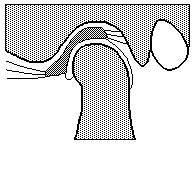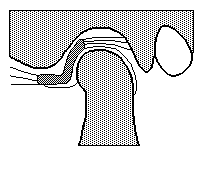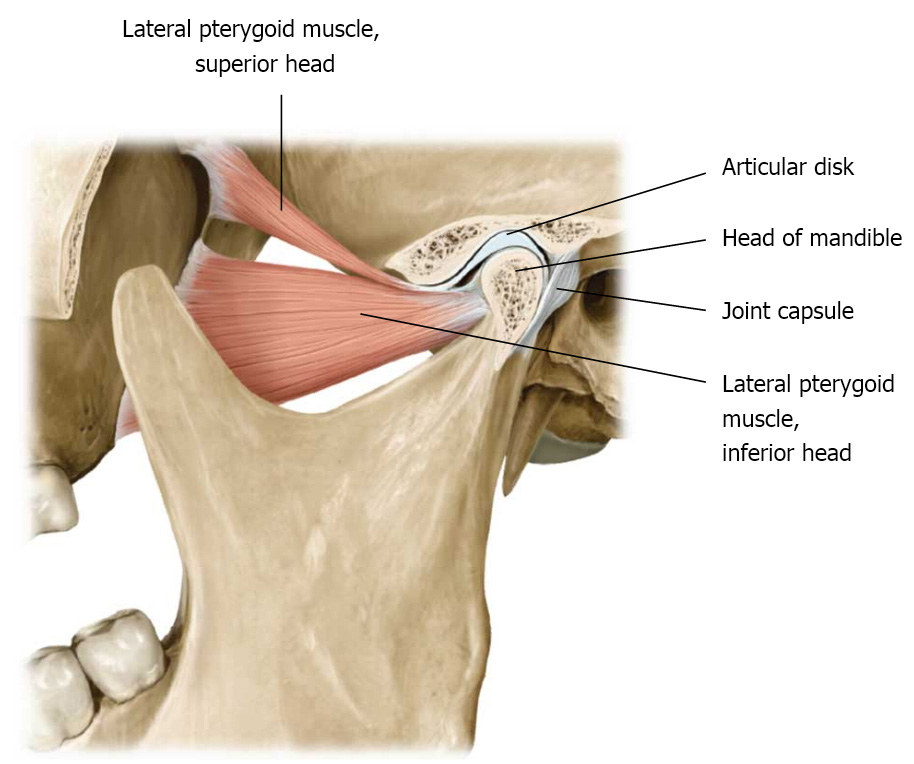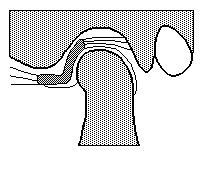TMJ is an abbreviation for ‘Temporomandibular Joint’ (the jaw joints). Located just in front of both ears, each person has two TMJ’s that hinge the lower jaw to the rest of the skull. The TMJ has 2 movements: a rotation or hinge action that occurs as you open your mouth, and a gliding action, which is a movement that allows your mouth to open wider. The coordination of these two actions allows you to perform many functions with your mouth and teeth such as chew, yawn, shout, whistle, talk, and sing. To keep the movements of the jaw smooth, a disc lies in between the head of the jaw joint (condyle) and the bone of your skull (temporal bone). The disc prevents the bones of the jaw joint and skull from rubbing against each other, and provides a shock absorber to the forces created when chewing.
The abbreviations TMD, TMJD, and CMD are all used interchangeably to describe a condition or dysfunction involving the jaw joints and the head and neck region. Most health practitioners involved in treating jaw joint problems use the term TMD that stands for Temporomandibular Joint Disorder.
Normal Jaw Function
In the normal healthy functioning TMJ, the disc is situated on the top of the condyle in the 2 o’clock position. When the mouth opens and closes, or the jaw moves from side to side, the disc remains in contact with the condyle at all times and provides smooth and pain free range of motion. No clicking, grating, popping, or other jaw joint noises are heard when the disc is in its correct position and remains there during all jaw movements.
 Disc Displacement With Reduction
Disc Displacement With Reduction
When a jaw joint problem has been occurring long enough from either chronic tooth clenching/grinding (micro trauma) or from an injury (macrotrauma) such as a fall, whiplash, or assault, often the disc will become displaced, or positioned forward to the condyle. When the mouth opens or is moved from side to side, the disc bunches up against the condyle and gets stretched until it ‘pops, cracks, or clicks’ and recaptures into its correct position.
This can happen every time the jaw is opened or moved, or may occur only occasionally. It is typically much worse in the mornings on waking. It can either be very quiet and heard only by the person themselves, or sometimes it can be loud enough to be heard across the table and by everyone in the room. When the teeth bite back together, the disc typically slips off the condyle again and is displaced until the mouth is opened or the jaw is moved. Often the disc slipping back off the condyle when the teeth come together cannot be felt or heard.
 Disc displacement without reduction
Disc displacement without reduction
When a jaw joint problem has been present for long enough, or following a fall or sudden blow to the jaw, often the person is suddenly unable to open their mouth or move their jaw very far from side to side. Most commonly patients report that their jaw “has clicked all my life then suddenly stopped”, or “I woke up this morning and my jaw was locked shut”. When this occurs, the disc no longer is able to be recaptured back onto the condyle during normal jaw movements. It becomes trapped forward of the condyle and bunches up restricting jaw movement and mouth opening. Often a lot of pain is associated with this condition and urgent correct repositioning and stabilisation treatment is vital to prevent a long term and chronic problem from developing.



